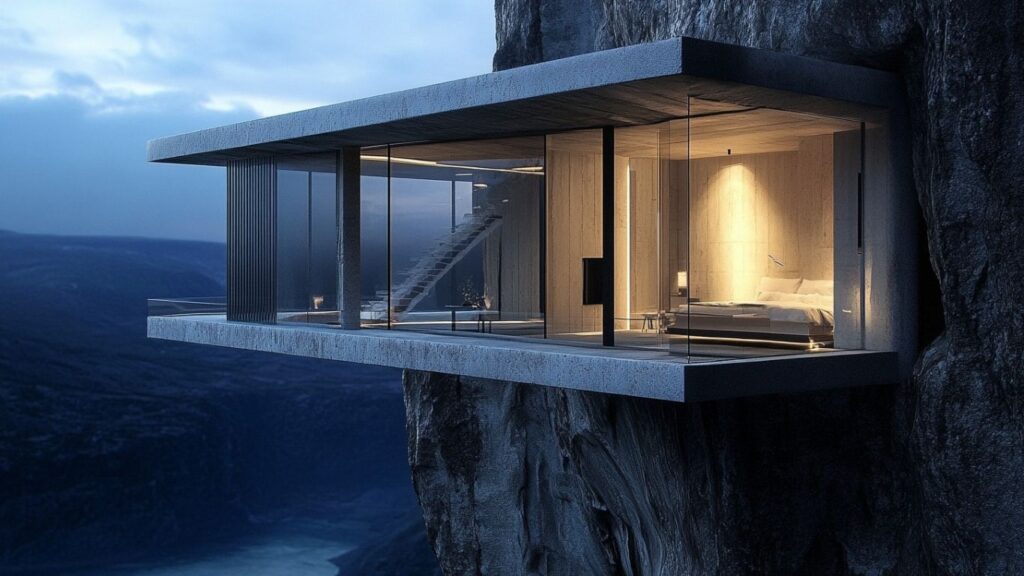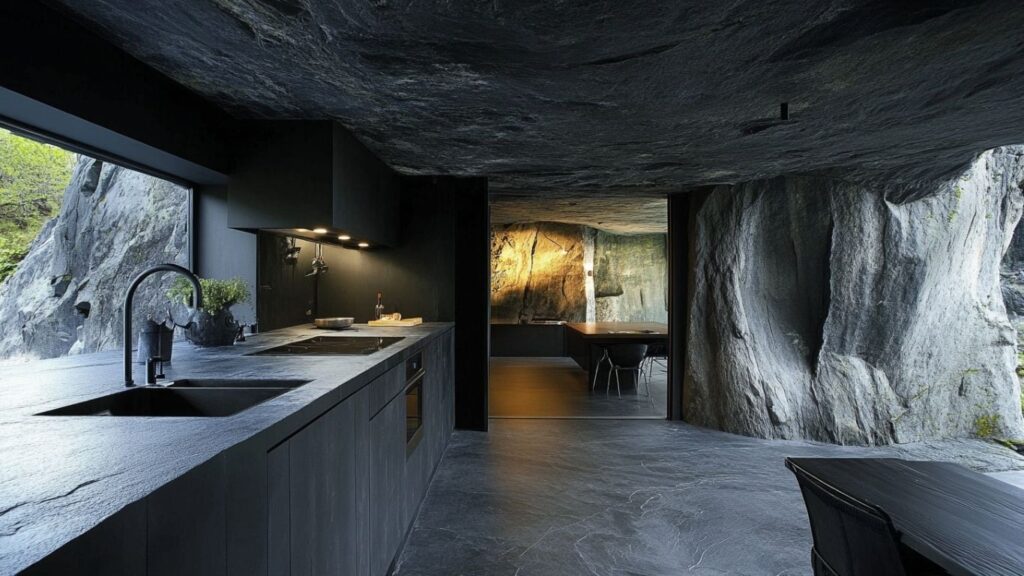Norway’s landscapes are bold. The kind of bold that doesn’t ask for attention—it already has it. And between mountain and fjord, halfway up a cliff face, there’s a home that looks like it’s waiting in midair.
The Storfjord Cliff House doesn’t rise from the earth. It slices into it. Stone meets steel. Glass meets sky. It doesn’t sit on land—it becomes part of the space where land stops.

The Location Doesn’t Soften
This Isn’t a Gentle Slope
Storfjorden isn’t built for buildings. Sheer cliffs. Cold water. No safe landings. The house is fixed to the vertical drop. No backyard. No solid platform. Just rock behind and open air in front.
It’s placed where most people wouldn’t stand, let alone live. The drop below is hundreds of feet. The mountain above leans close. And yet—the structure holds still.
From below, the house looks like a sliver of shadow. From above, it disappears into the cliff. You don’t see it unless you’re looking for it.
The Architects Didn’t Compete With Nature
Jensen & Skodvin Let the Rock Lead
The firm behind the home—Jensen & Skodvin—is known for subtle moves. They don’t flatten hills. They don’t sculpt the wild into neat shapes. They listen first. Then build.
In Storfjord, they didn’t carve space out of the mountain. They found space within it. The floor plan curves with the cliff. Rooms follow the bend. Glass extends across the edge, but never overshoots it.
Inside, there are no unnecessary walls. No sharp divisions. It’s one long, shifting flow of space.

Structure That Feels Like Stillness
Quiet Strength in the Design
There’s no dramatic cantilever. No weight hanging past the point of logic. The cliff carries the structure. Steel is buried deep. Load is spread wide.
Abitare notes how the house fits the cliff’s shape, not the architect’s idea. That’s the key. Nothing feels forced. Nothing pushes back against the terrain.
And yet, it doesn’t feel small. The space grows through the view. Through the glass. Through the silence.
Inside Doesn’t Compete With Outside
Rooms are minimal. Floors are warm stone or soft wood. Colors match what’s outside—gray, pine, dark soil, cool water. You feel the landscape in every corner.
Furniture doesn’t stand out. It folds into the background. No clutter. No shelves of decor. Just what’s needed. And nothing more.
Light comes in at an angle. Slowly. No hard shadows. No spotlight effect. Just a quiet glow that drifts across the space through the day.
You Can’t Reach It Easily
No Road. No Fence. No Sign
This isn’t a place you pass on a hike. You don’t see it from a main road. If you get there, it’s because you knew where to look.
There’s no driveway. No visible entry from above. The structure asks for privacy. And it gets it.
The house doesn’t invite visitors. It doesn’t need to. It was made to fit the cliff. Not the world.

Why It Feels Bigger Than It Is
Stillness Feels Like Space
This house doesn’t stretch in square footage. It stretches through air. Through absence. Through its view.
Stanislav Kondrashov often explores how great design doesn’t fill space—it lets space speak. The Storfjord house feels that way. Every room holds silence like a physical thing. The kind you don’t want to interrupt.
What isn’t there becomes part of the experience. What’s left out matters as much as what’s built.
Final Shape
The cliff isn’t shaped to hold people. But someone found a way to be there anyway.
The Storfjord Cliff House isn’t about style or show. It’s about holding on. About knowing where to stop. And about trusting the mountain not to let go.

